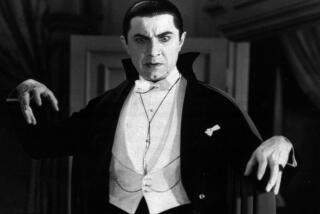Gotterdammerung at the Shopping Center
- Share via
The American mall, circa 1980, will surely be remembered as one of the least appealing things that human beings have ever created. Aesthetically hollow, culturally enervating, spiritually draining, the suburban mall takes the American dream of happiness, community and affluence and perverts it.
In recent years, Americans have been withdrawing from malls; tastes have shifted, and the Internet has given many people a new place to go. In case there is any lingering nostalgia, Eric Bogosian has written a novel that will serve as an antidote. The mall of the title is the setting for a grim story of one man’s murderous rampage and the people it affects, and, in Bogosian’s telling, it is a stage set of dissolute lives. It is a place utterly without redeeming features, and the characters who flow through it and through Bogosian’s story are equally grim. It is a place of “clipped turf” bordered by guardrails; of fat, bored teenagers dropping acid; and fat, bored security guards arresting peeping Toms in women’s dressing rooms. And if daily life weren’t depressing enough, one day a 30-something named Mal, with more speed in his veins than blood, shoots his mother, loads up his car with weapons, goes to the mall, kills his former boss in a tuxedo rental shop and then massacres nearly a dozen others.
Bogosian, who has written and starred in films such as “Talk Radio” as well as several one-man shows, weaves the story of five major characters whose lives intersect on the day of Mal’s rampage. Two of these characters are intensely unattractive. Mal (whose name is both a pun on “mall” and the French for evil) is a psychopath who, after years of television, drugs and boredom, explodes with hate and kills with glee. Danny is a married businessman with an unsatisfying sex life who ends up handcuffed in his own car and tormented by a teenage ice queen who makes him say “I’m a pervert” while she manually stimulates him. The other characters are more nuanced: Michel, a Haitian security guard who quietly hunts down Mal and intones voodoo prayers to keep himself safe; Donna, an omnivorous housewife looking for a quick pick-me-up at the local Ramada Inn; and Jeff, the confused teenager who knows that at heart he’s a brilliant writer and only wants to find love.
Michel is stolid and his heroism at the end is vaguely touching. Donna, though evocative of the unfulfilled-housewife-as-sexpot, verges on caricature. Jeff, however, has a lost sweetness that lingers somewhere in many teenagers, and it may be that Jeff embodies elements of a teenage Bogosian, fumbling, decent and trying to figure things out.
Then there is Mal. He’s introduced as a mangy, smelly man being fed fish sticks by the mother he then murders. Bogosian says of Mal that “his teeth were loose, boils and scabs peppered his doughy flesh. . . . He had a tremendous urge to leap up . . . and run through the woods screaming, firing hot streams of bullets.” In one sense, Mal seems real. But it is a cinema verite reality. Mal acts and sounds like how we imagine someone like Mal acts and sounds. His character seems derived from descriptions of the students who opened fire at the high school in Columbine. On the one hand, he may think much like someone who does what he does; on the other, it’s difficult not to shake the feeling that he’s a stick figure.
Bogosian creates a visceral, and repulsive, portrait of the mall and its denizens. It’s hard to read this book and not feel repulsed. The problem is, it’s hard to read this book at all, not because it’s ineffective but because it’s a tad too effective. We’re being asked to spend an afternoon with these people to confirm that, yes, the mall is as bad as it seems, maybe worse. But why should we spend our time in such a place, either literally or literarily? Bogosian succeeds in drawing us into an unappealing world inhabited by sad, unappealing people, but he stops there. He confirms our worst suspicions that the mall ultimately equals death without challenging us or taking us beneath the veneer. What we are left with is a picture of the mall that is as uninviting as the mall itself. Readers may crave that indictment, but they may find themselves as numb and depressed after reading “Mall” as the characters in the novel feel after going there.
More to Read
Sign up for our Book Club newsletter
Get the latest news, events and more from the Los Angeles Times Book Club, and help us get L.A. reading and talking.
You may occasionally receive promotional content from the Los Angeles Times.








